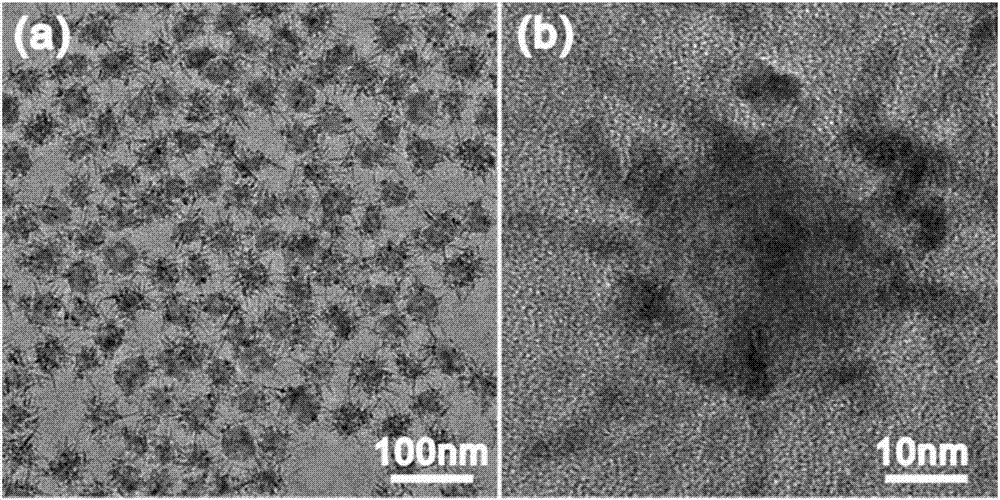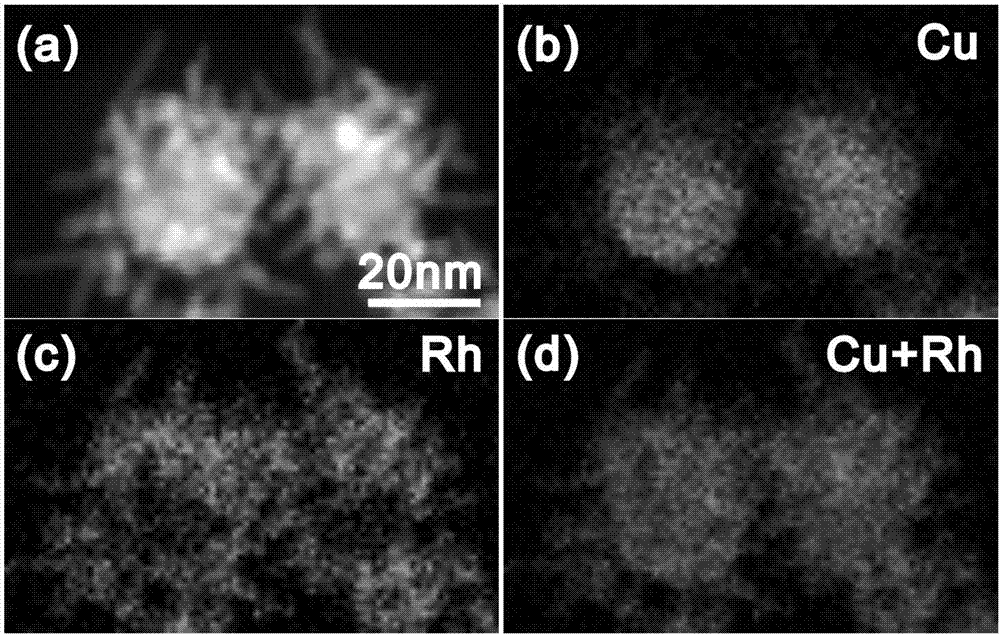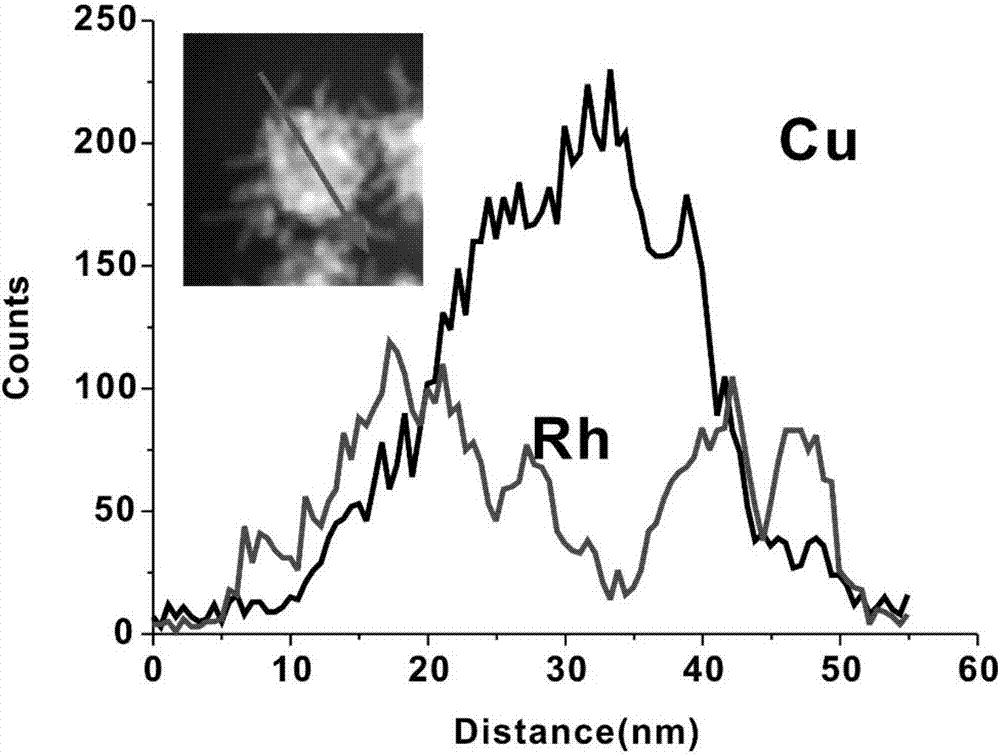Preparation method for copper rhodium bimetal ramiform material
A bimetallic and dendritic technology, applied in the field of preparation of copper-rhodium bimetallic dendritic materials, can solve the problems of high price and low rhodium storage, and achieve high specific surface area, controllable components, and high mesopority Effect
- Summary
- Abstract
- Description
- Claims
- Application Information
AI Technical Summary
Problems solved by technology
Method used
Image
Examples
Embodiment 1
[0024] In a 25mL glass bottle, add 52.8mg of ascorbic acid, 19.7mg of copper acetylacetonate, 10.0mg of rhodium acetylacetonate, 5mL of oleylamine, stir at room temperature for 8 minutes, and then sonicate for 8 minutes. h, and finally cooled down to room temperature naturally, washed with n-hexane several times and stored in n-hexane solution for later use.
[0025] The morphology, composition and microstructure of the product are systematically studied by TEM, HRTEM, HAADF-STEM, XRD and other modern nano-testing and analysis techniques. TEM, HRTEM ( figure 1 a, b) Characterized as Cu-Rh (3-1) Dendritic nanocrystal structure with a diameter of about 35nm; energy spectrum analysis surface scanning (EDS) ( figure 2 a, b, c, d) and energy spectrum analysis linear scan (EDS) ( image 3 ) to characterize Cu-Rh (3-1) The dendritic nanocrystal is a core-shell structure, the middle copper is the core, and the outer rhodium branch is the heterogeneous structure of the shell.
Embodiment 2
[0027] In a 25mL glass bottle, add 52.8mg of ascorbic acid, 13.3mg of copper acetylacetonate, 20.0mg of rhodium acetylacetonate, and 5mL of oleylamine, stir at room temperature for 8 minutes, and then ultrasonicate for 8 minutes. h, and finally cooled down to room temperature naturally, washed with n-hexane several times and stored in n-hexane solution for later use.
[0028] TEM, HRTEM characterization such as Figure 4 (a, b) is Cu-Rh (1-1) Dendritic nanocrystalline structure with a diameter of about 35nm; the inner copper core becomes smaller, and the outer shell has more rhodium branches.
Embodiment 3
[0030] In a 25mL glass bottle, add 52.8mg of ascorbic acid, 6.7mg of copper acetylacetonate, 30.0mg of rhodium acetylacetonate, 5mL of oleylamine, stir at room temperature for 8 minutes, then ultrasonic for 8 minutes, and put the reaction bottle in an oil bath at 170°C for three hours. , and finally cooled down to room temperature naturally, washed with n-hexane several times and stored in n-hexane solution for later use.
[0031] TEM, HRTEM characterization such as Figure 5 (a, b) is Cu-Rh (1-3) Dendritic nanocrystalline structure with a diameter of about 30nm; the inner copper core is very small, and the outer shell has more rhodium branches.
PUM
| Property | Measurement | Unit |
|---|---|---|
| diameter | aaaaa | aaaaa |
| diameter | aaaaa | aaaaa |
Abstract
Description
Claims
Application Information
 Login to View More
Login to View More - R&D
- Intellectual Property
- Life Sciences
- Materials
- Tech Scout
- Unparalleled Data Quality
- Higher Quality Content
- 60% Fewer Hallucinations
Browse by: Latest US Patents, China's latest patents, Technical Efficacy Thesaurus, Application Domain, Technology Topic, Popular Technical Reports.
© 2025 PatSnap. All rights reserved.Legal|Privacy policy|Modern Slavery Act Transparency Statement|Sitemap|About US| Contact US: help@patsnap.com



